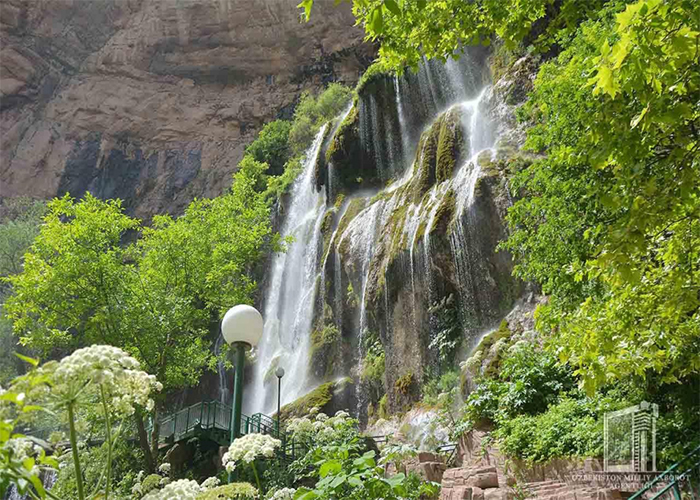Sangardak waterfall Sangardak waterfall is located in the mountain village of Sangardak, about 55 kilometers from the center of the Sariosiya district of Surkhandarya region. The waterfall falls from a cliff 120 meters above the ground. Its water content increases in summer and decreases in autumn. According to locals, its clear water is formed by the melting of glaciers in the highlands. Its unique nature and cool breeze make it a popular place of pilgrimage. There are countless tourists who want to enjoy the clear water of the waterfall and enjoy the beautiful view of the sun. Today, thousands of pilgrims from all over the world come to Nurata to visit the cult complex, which is famous all over Asia, with its center as a sacred spring (“chashma”). In one of the legends about the source, it is said that when a meteorite radiated light and fell to the ground, the water, which has healing properties, hit the place where it fell. Here the name of the region "Nur" appears, which means "Light" in Arabic. The source is located near the ruins of the Fortress of Light, founded by Alexander the Great in the IV century BC. The ruins of the fortress are still of great interest to scientists, as it is one of the oldest monuments in Uzbekistan. During the excavations, archaeologists discovered that the castle was located on a hill and surrounded by a wall. One of the features of the castle was the water supply system that was commissioned by Alexander the Great. These measures were necessary because in ancient times the fortress was of strategic importance and was located between the agricultural settlement of Marakanda (Samarkand) and the area of wild nomads who attacked the settlement from the North. In the event of an attack, the defenders had to use the water for free.


